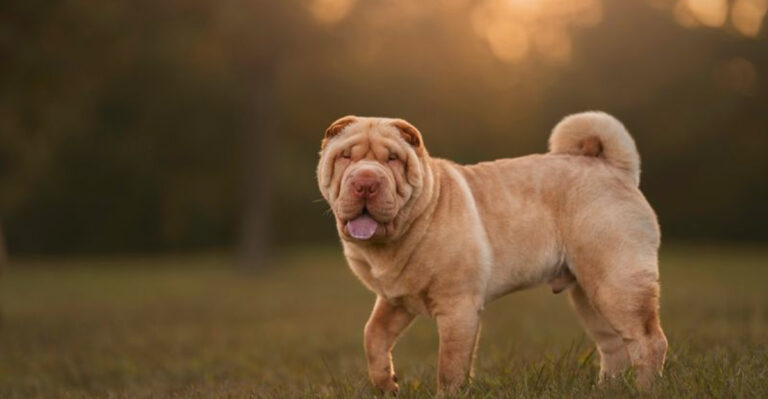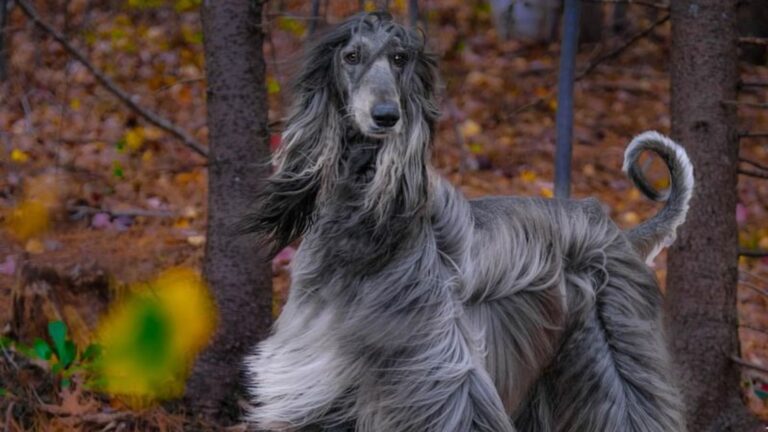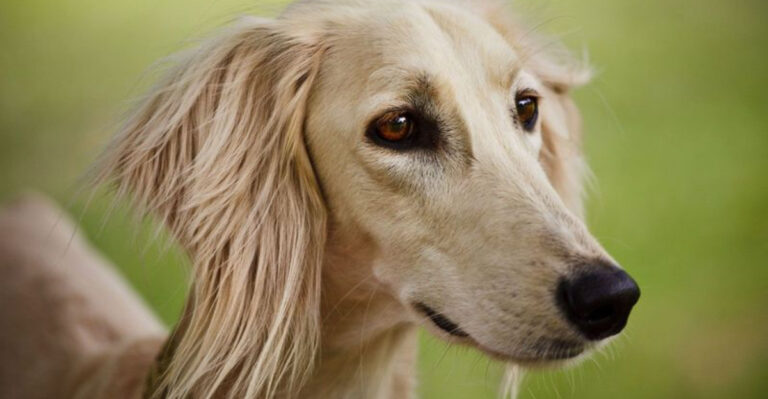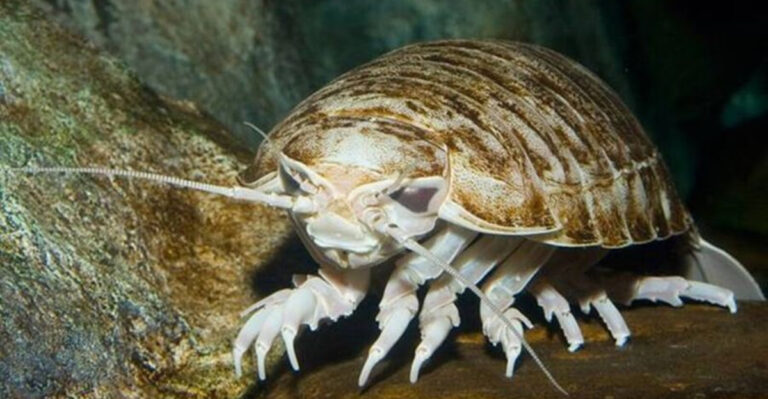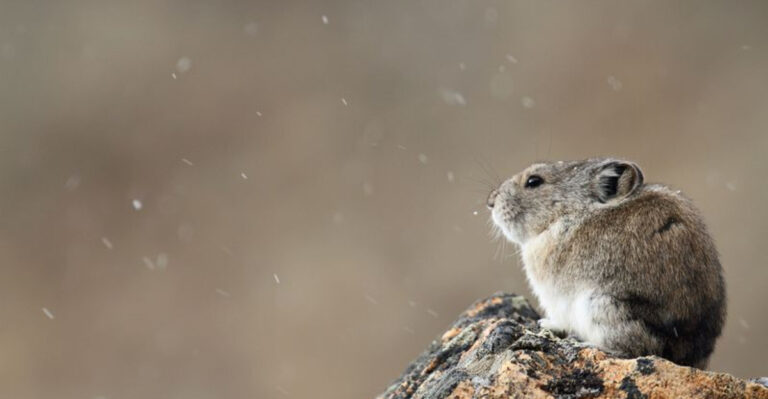17 Most Unpredictable Horse Breeds That Require Extreme Caution
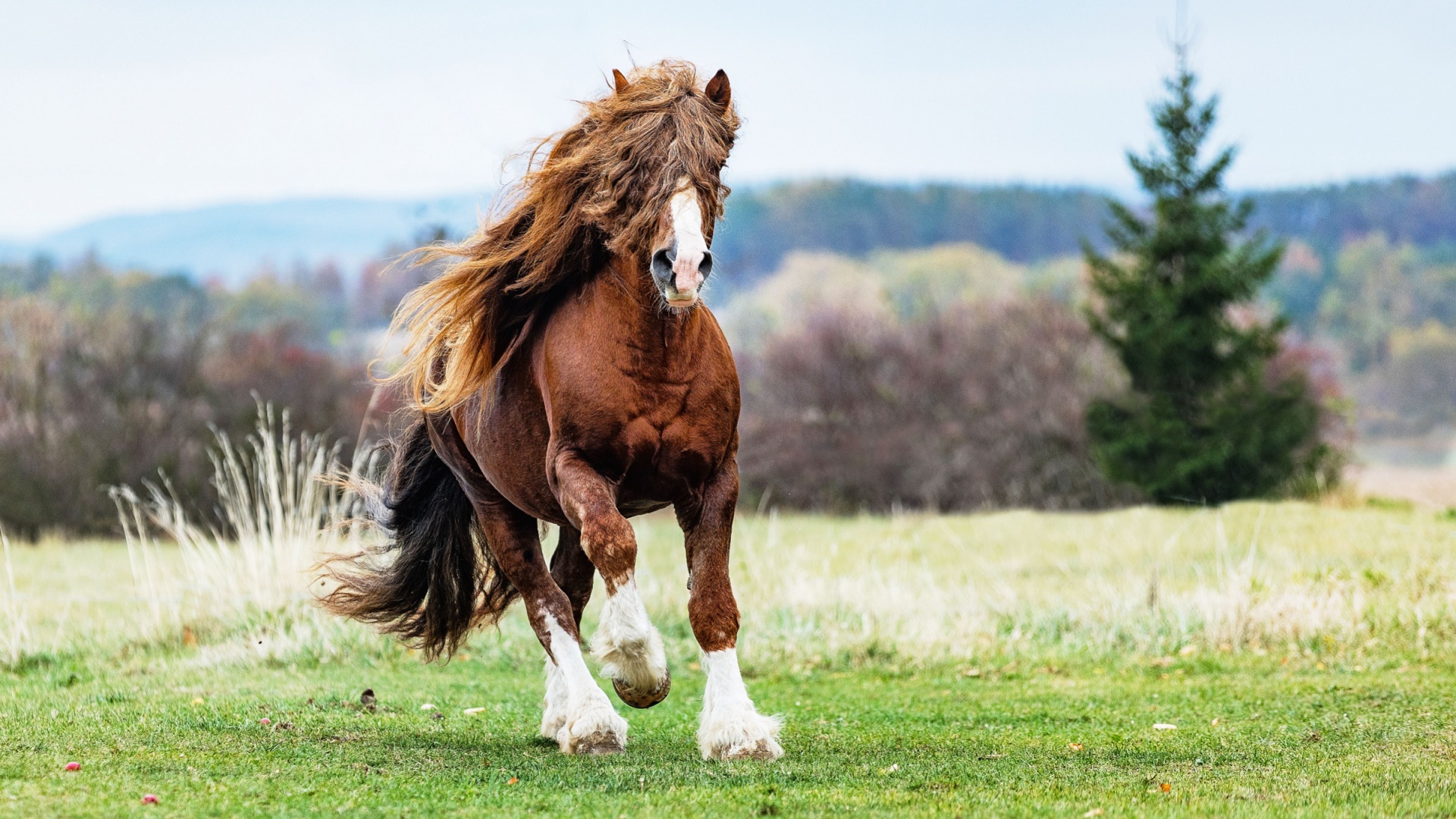
Some horse breeds are known for their strong personalities, and while most are gentle and friendly, others can be more unpredictable, requiring experienced handling and extreme caution.
Whether it’s due to their high energy, protective instincts, or sensitivity to their environment, these horses may pose challenges for novice riders or owners.
We’ll explore 17 horse breeds that are known for their unpredictable nature and why they demand careful attention and respect. Understanding these breeds is essential for anyone looking to interact with them safely.
17. Hanoverian
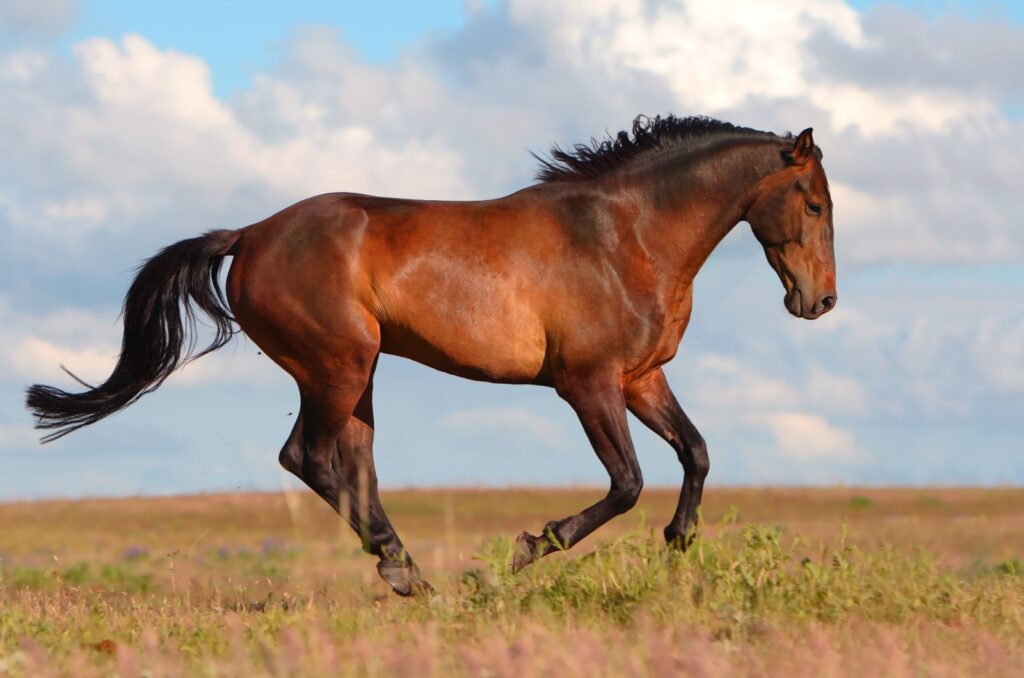
Shutterstock
The Hanoverian is a large and powerful breed, originally bred for dressage and jumping, which can make it unpredictable for inexperienced handlers.
Known for their strength and high energy, Hanoverians require experienced riders who can manage their intensity.
If not properly trained, they may become challenging to control, particularly during high-stress situations. Their size and temperament demand extreme caution, making them unsuitable for beginners or casual horse owners.
16. Shire
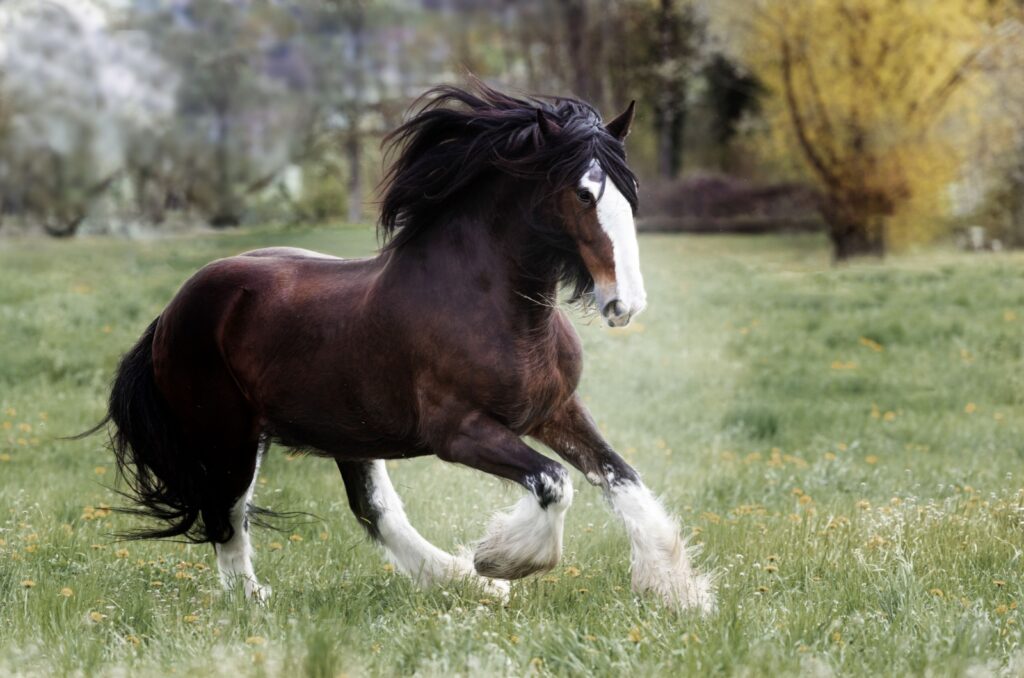
Shutterstock
Shires are one of the largest horse breeds, known for their impressive size and strength. While generally calm and gentle, their size can make them unpredictable, especially when startled or in unfamiliar situations.
Shires require handlers who are confident and knowledgeable, as their sheer strength can lead to dangerous situations if not properly managed. Caution is essential when interacting with these majestic yet powerful horses, particularly for those without experience with large breeds.
15. Percheron
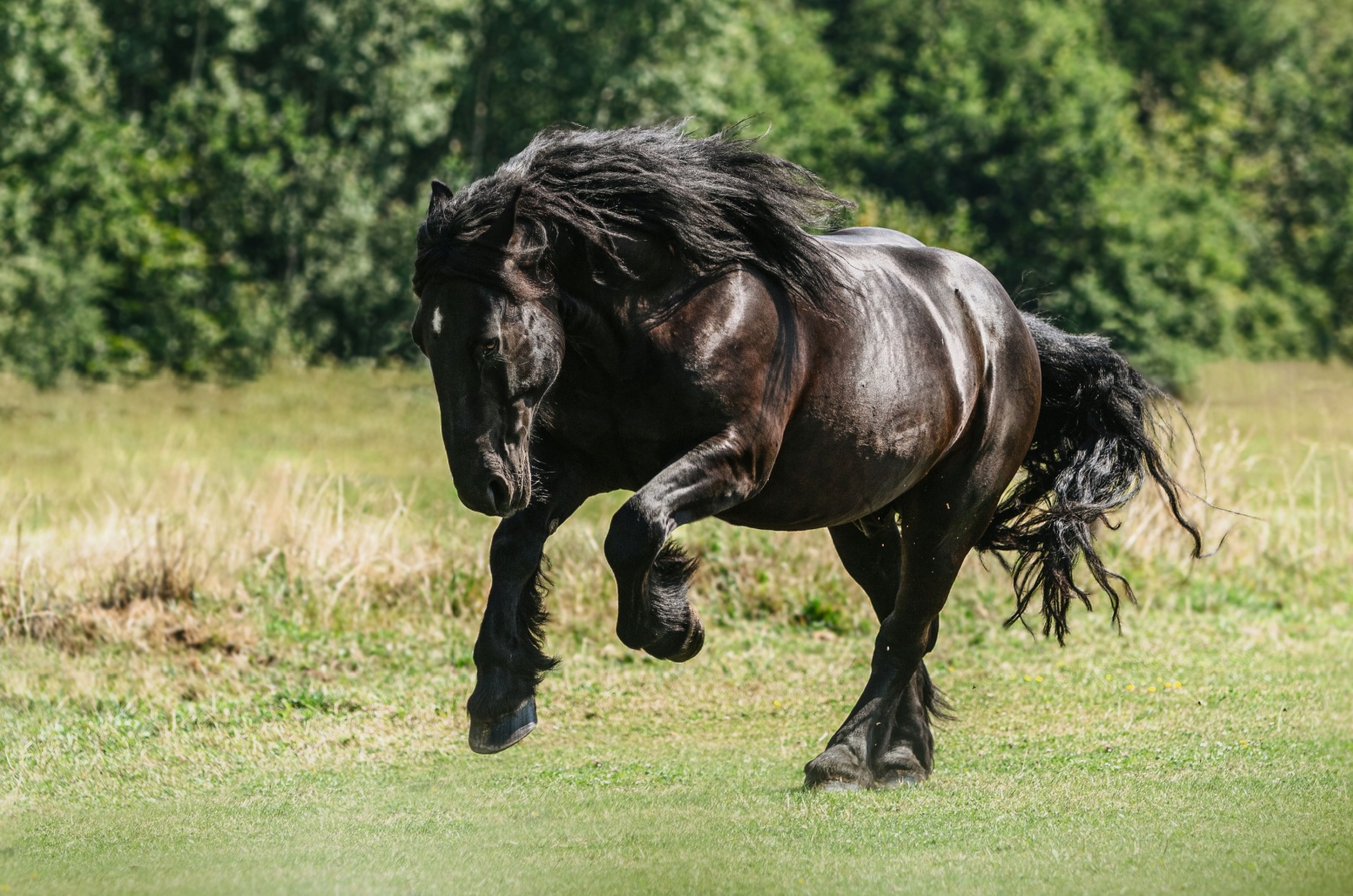
Credit: Shutterstock
The Percheron, a powerful draft horse originating from France, is known for its strength and endurance. While generally calm and good-natured, their sheer size and power can make them dangerous if not properly trained or handled.
Weighing up to 2,600 pounds and standing over 18 hands tall, a Percheron can unintentionally cause harm if spooked or improperly controlled.
Their strong work ethic and physical capabilities demand experienced handlers who can manage their energy and ensure they are well-socialized. Without proper training, their size alone can make them overwhelming and risky, particularly in tight or unpredictable situations.
14. Appaloosa
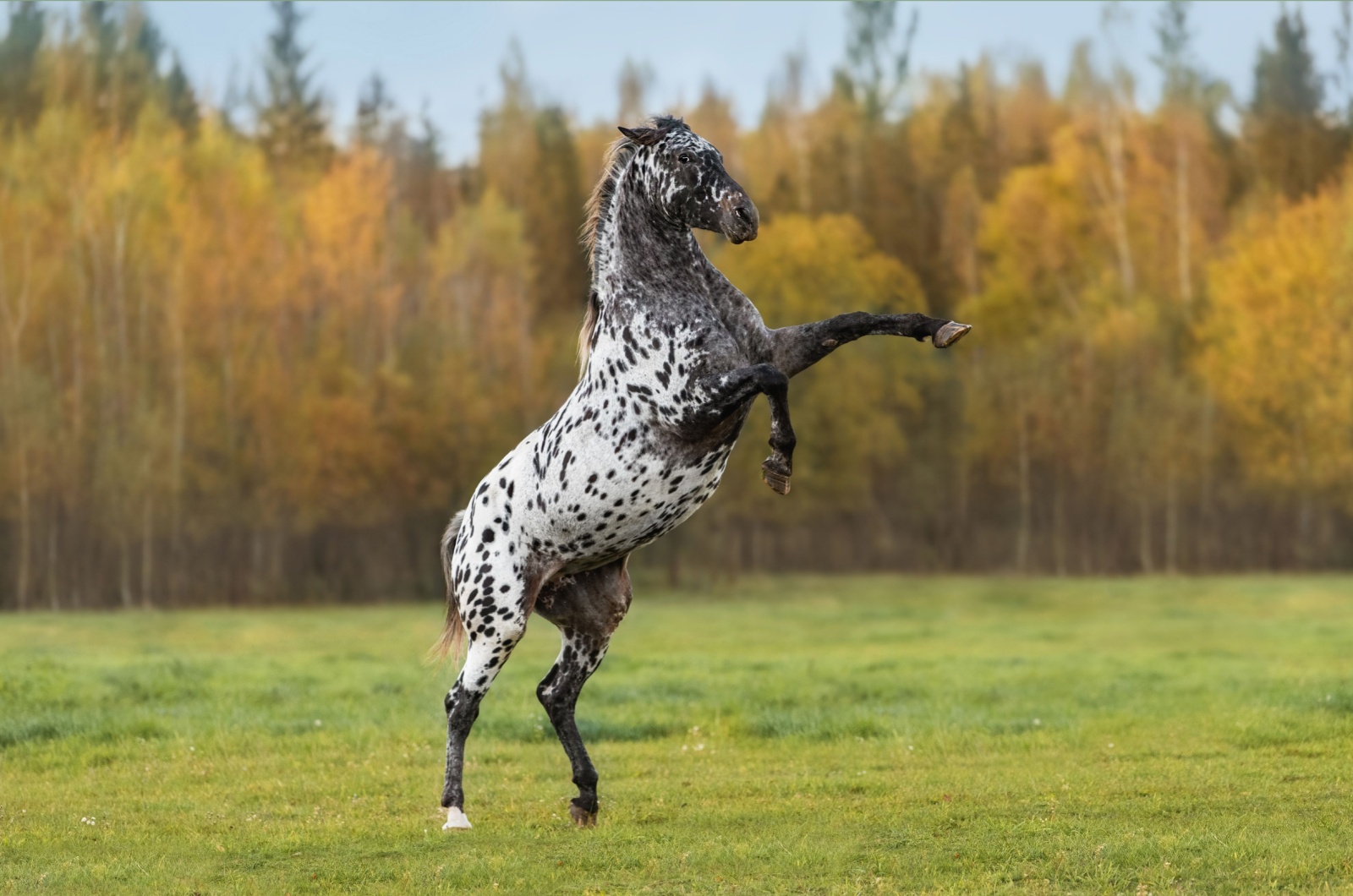
Credit: Shutterstock
Appaloosas, known for their striking spotted coats and versatility, can occasionally display stubborn and independent traits that make them challenging for inexperienced riders.
Bred for endurance and adaptability, they can become unpredictable if not properly trained or managed. Their spirited nature, coupled with a tendency to assert dominance, may result in them being difficult to handle in stressful situations.
If they feel threatened or mistreated, they can act defensively, increasing the risk of injury to handlers or riders. With the right training and guidance, however, Appaloosas can be loyal and reliable partners.
13. Clydesdale
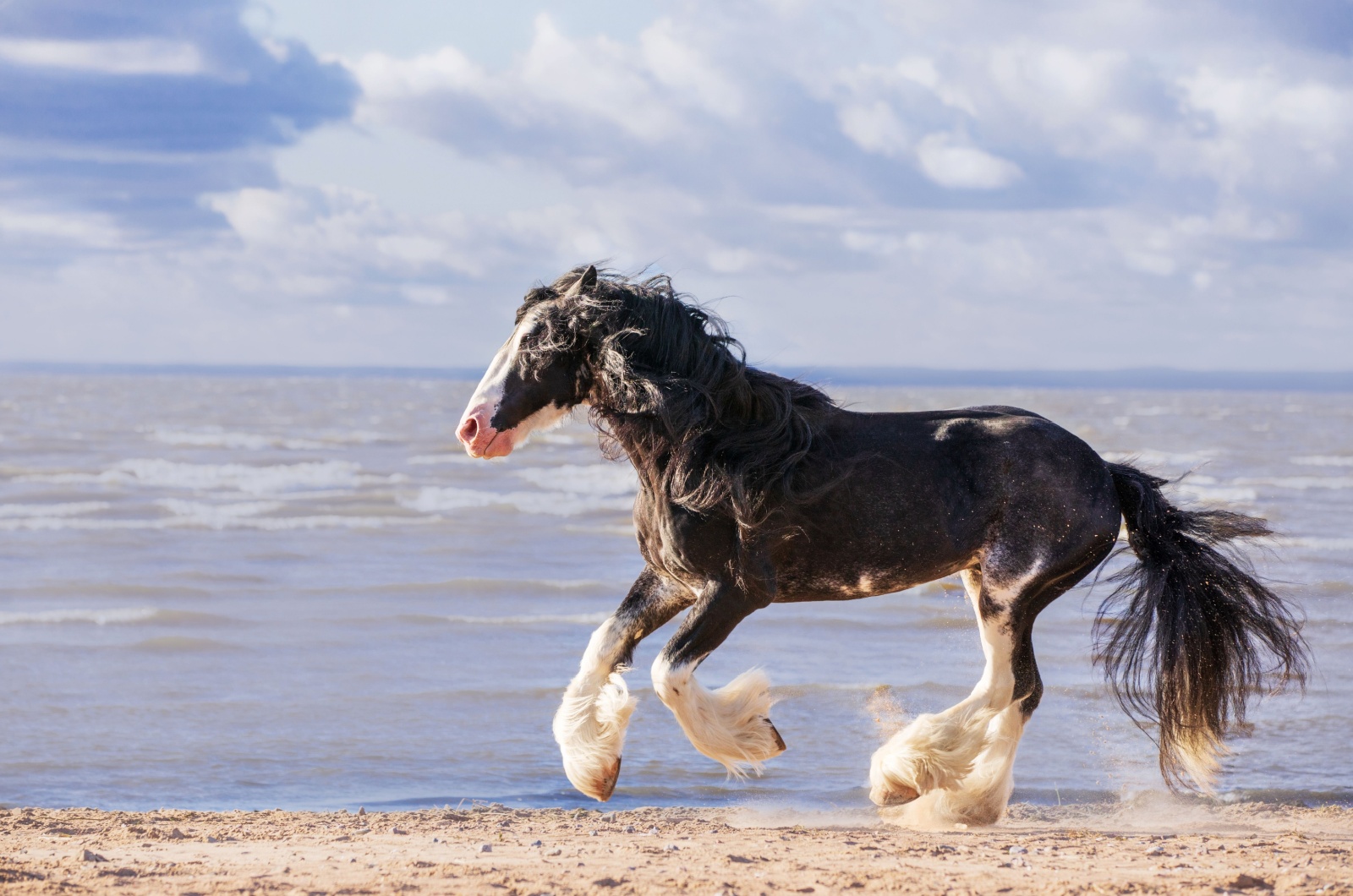
Credit: Shutterstock
Clydesdales are powerful draft horses originally bred in Scotland for heavy farm work and hauling loads. While they are known for their calm demeanor, their massive size, often weighing over 2,000 pounds, can make them dangerous in situations where control is lost.
Their sheer strength can lead to accidental injuries, especially if they become startled or unbalanced. Inexperienced handlers may struggle to manage their weight and power, making proper training essential.
When working with Clydesdales, it is crucial to establish trust and respect through consistent handling and positive reinforcement. Clear communication through body language and voice commands can help prevent misunderstandings that could lead to dangerous situations.
12. Brumbi
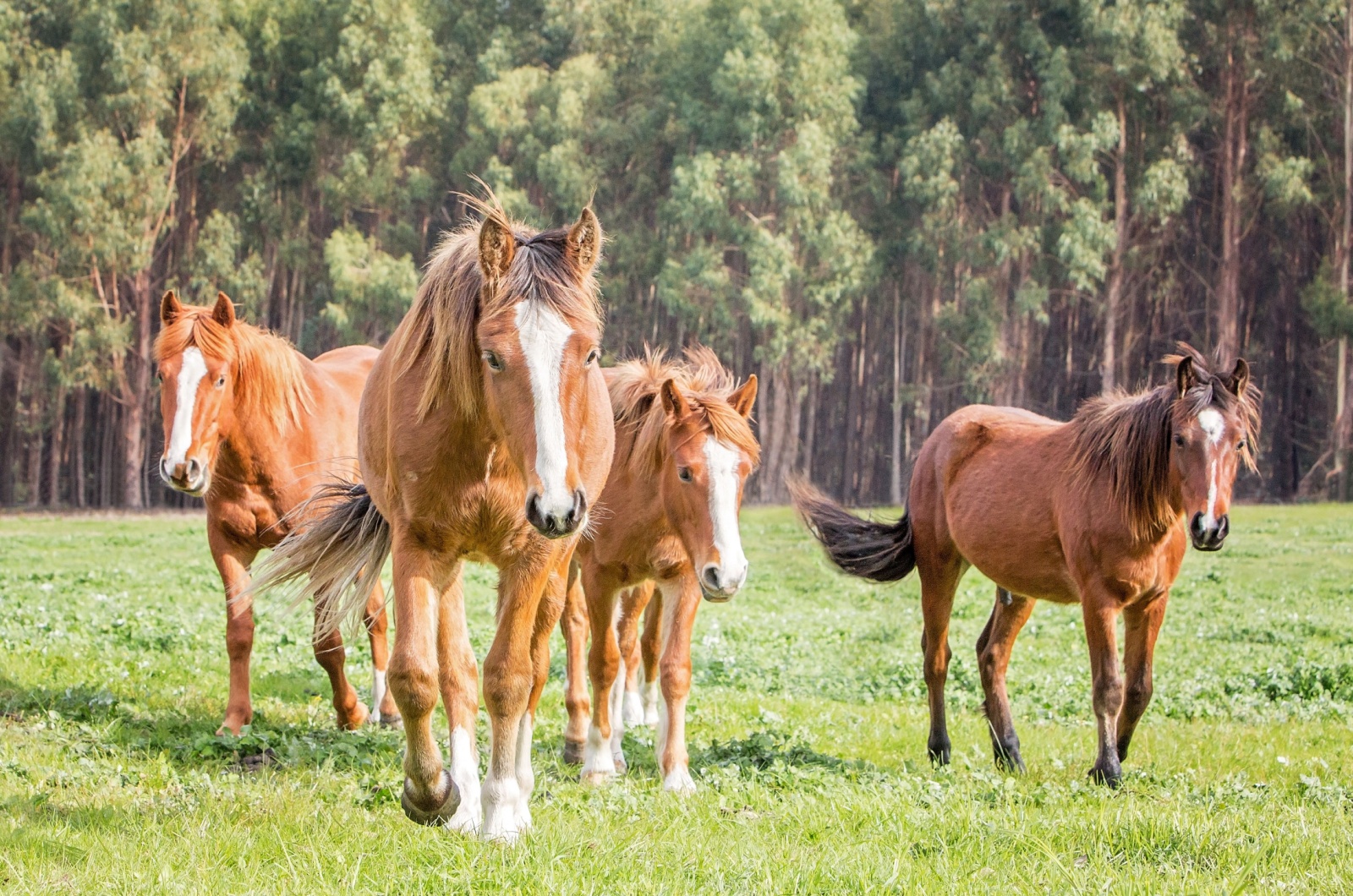
Credit: Shutterstock
Brumbies are feral horses native to Australia, descended from domesticated breeds that escaped or were released into the wild.
Their untamed nature makes them unpredictable and potentially dangerous, especially when they feel threatened or cornered.
Unlike domesticated horses, Brumbies lack consistent human interaction, which can lead to heightened flight responses and defensive behaviors such as charging or kicking.
Their survival instincts make them highly alert and reactive to sudden movements, noises, or unfamiliar surroundings, increasing the risk of accidents. Capturing and taming a Brumby requires expertise, as their initial distrust can result in aggressive resistance.
Handlers must approach with patience and calm energy, using gradual desensitization techniques to build trust over time.
Safety precautions include wearing protective gear, maintaining a safe distance, and working in a controlled environment, such as a round pen, to minimize risk. Brumbies can be successfully trained and domesticated but require more time and skill compared to other breeds.
11. Friesian
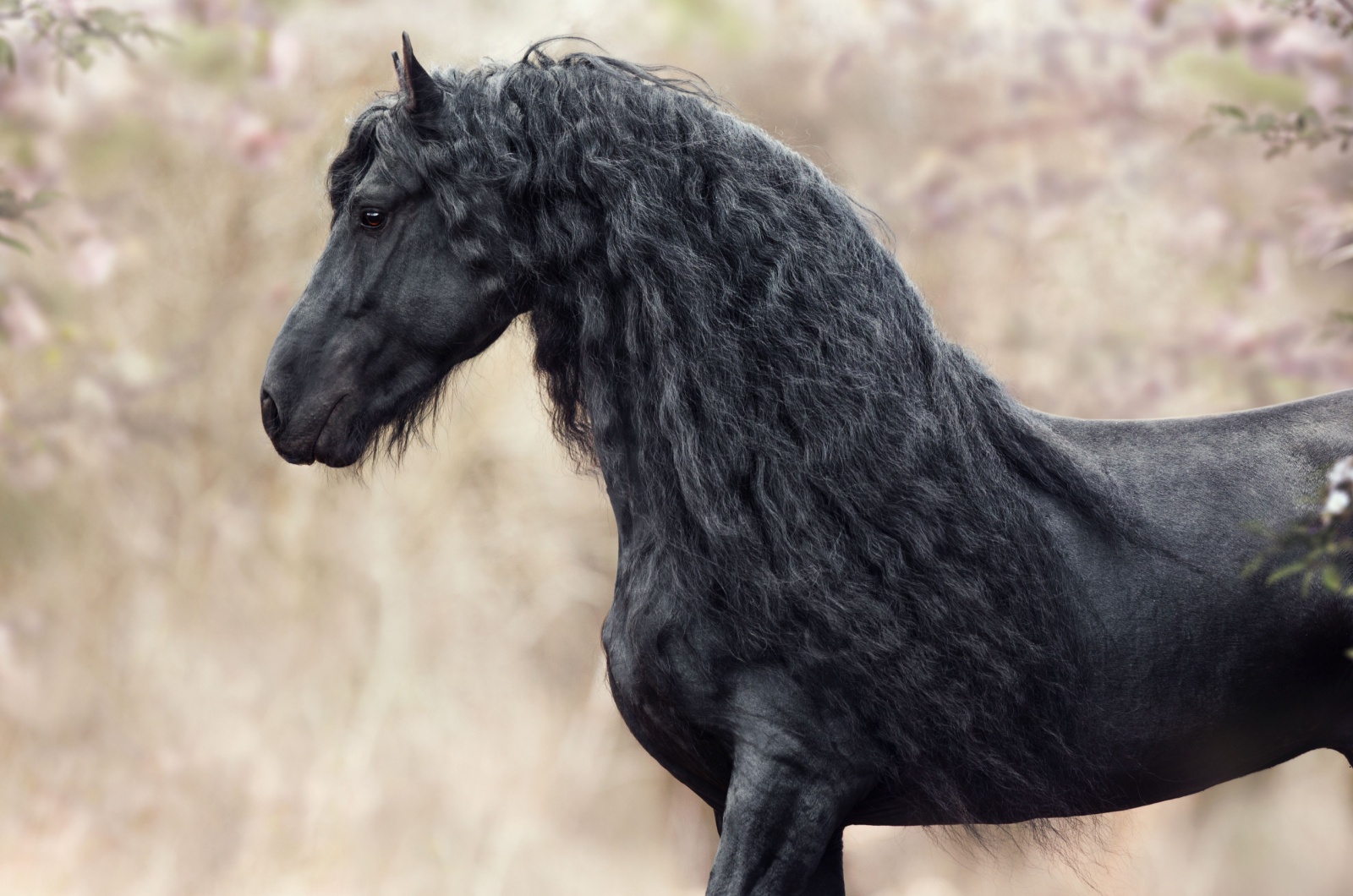
Credit: Shutterstock
Friesians may look like fairy-tale horses with their majestic black coats and flowing manes, but don’t let their looks fool you. These horses are big, strong, and can be a bit stubborn, making them a handful for a rider who isn’t ready for the challenge.
They aren’t usually aggressive, but their size and strength mean that if they get spooked or excited, they can be very tough to control. Friesians are loyal once you’ve earned their trust, but that takes time, patience, and a firm hand.
10. Standardbred
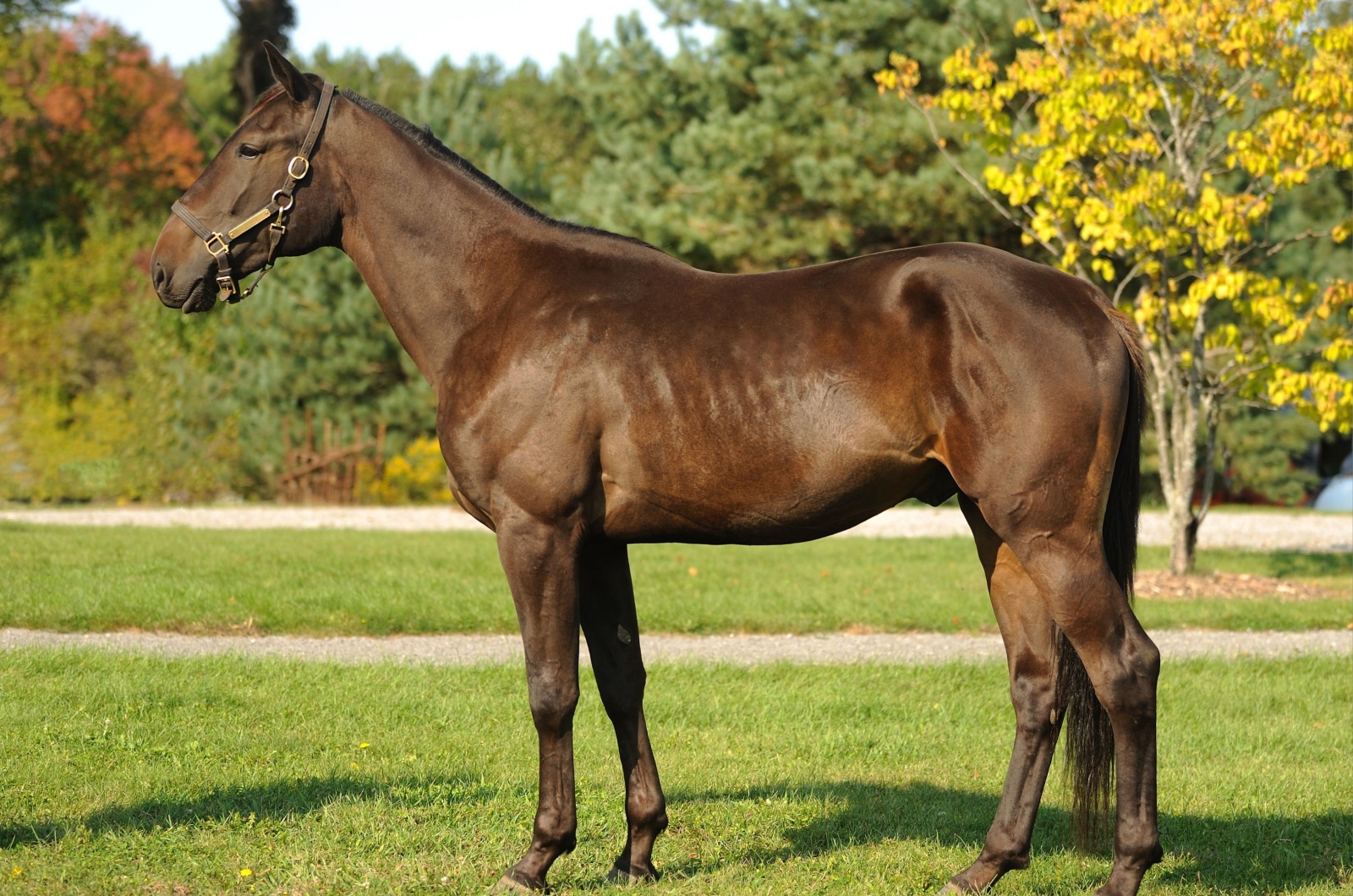
Credit: Shutterstock
Standardbreds are known for their gentle nature, but the ones trained for racing sometimes come with a touch of spice! These horses are powerful and super smart, and if they pick up any bad habits, they hold onto them tight.
When they get stubborn, they’re as determined as they are strong, which can make them tricky to handle. They do best with a confident, steady hand to keep them focused and well-behaved.
9. Saddlebred
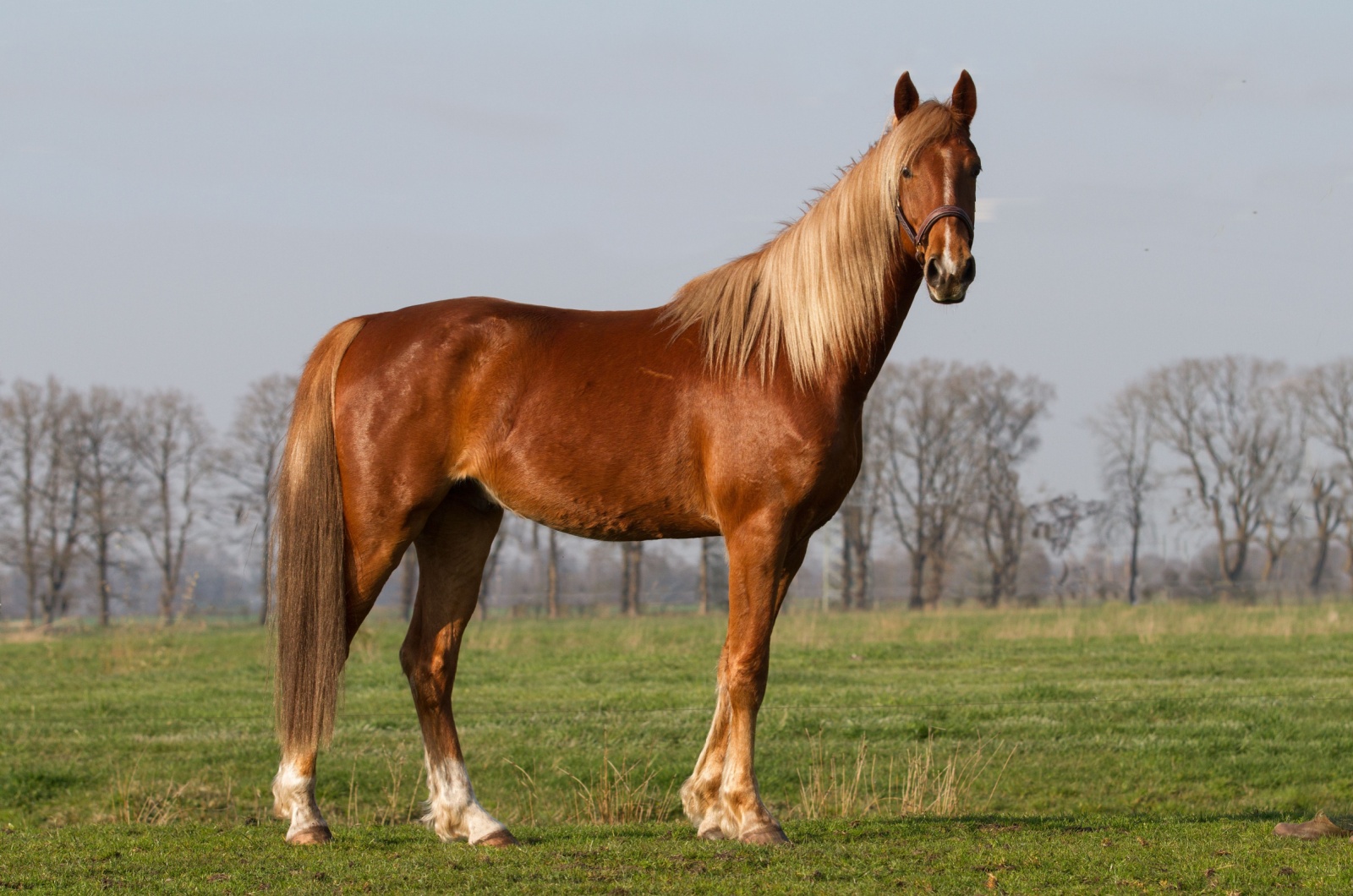
Credit: Shutterstock
Saddlebreds are all about flash and flair, often seen in show rings with their proud, high-stepping gait. That confidence can sometimes turn into sass, especially with inexperienced riders.
These horses are spirited and eager, which can be overwhelming for beginners. Saddlebreds need a rider who’s just as bold as they are – hesitation or nerves will only encourage them to push boundaries.
8. Marwari
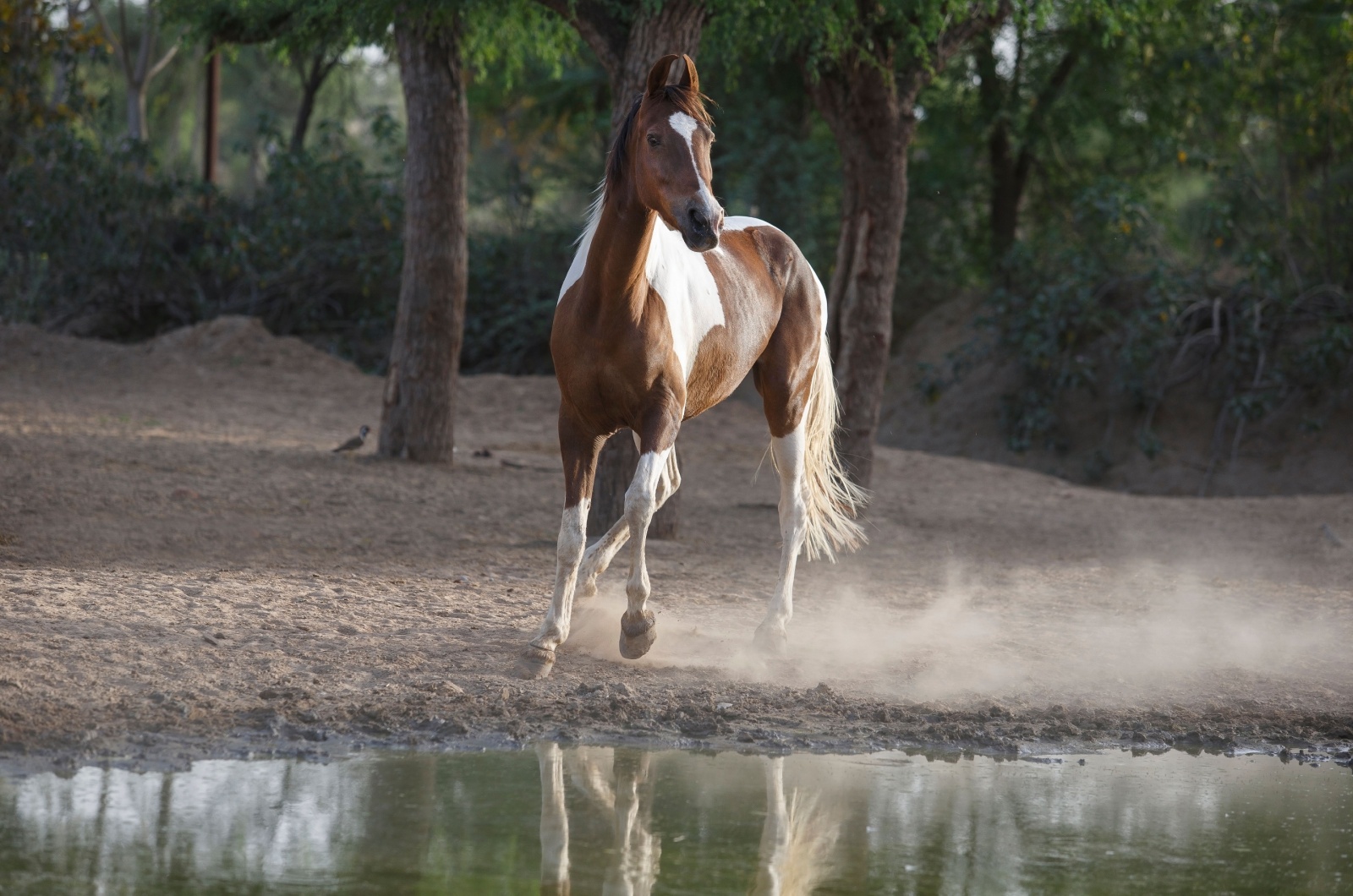
Credit: Shutterstock
With those unique, inward-curving ears, Marwaris are as exotic as they are fiery. This Indian breed has a strong sense of loyalty but is also known for its stubborn, strong-willed nature.
Originally bred for war, Marwaris carry a fearless spirit that can turn into defiance if they think their rider isn’t up for the task. They’re not the type to give in easily, so they need a skilled rider who can handle their intense energy and independence.
7. Lusitano
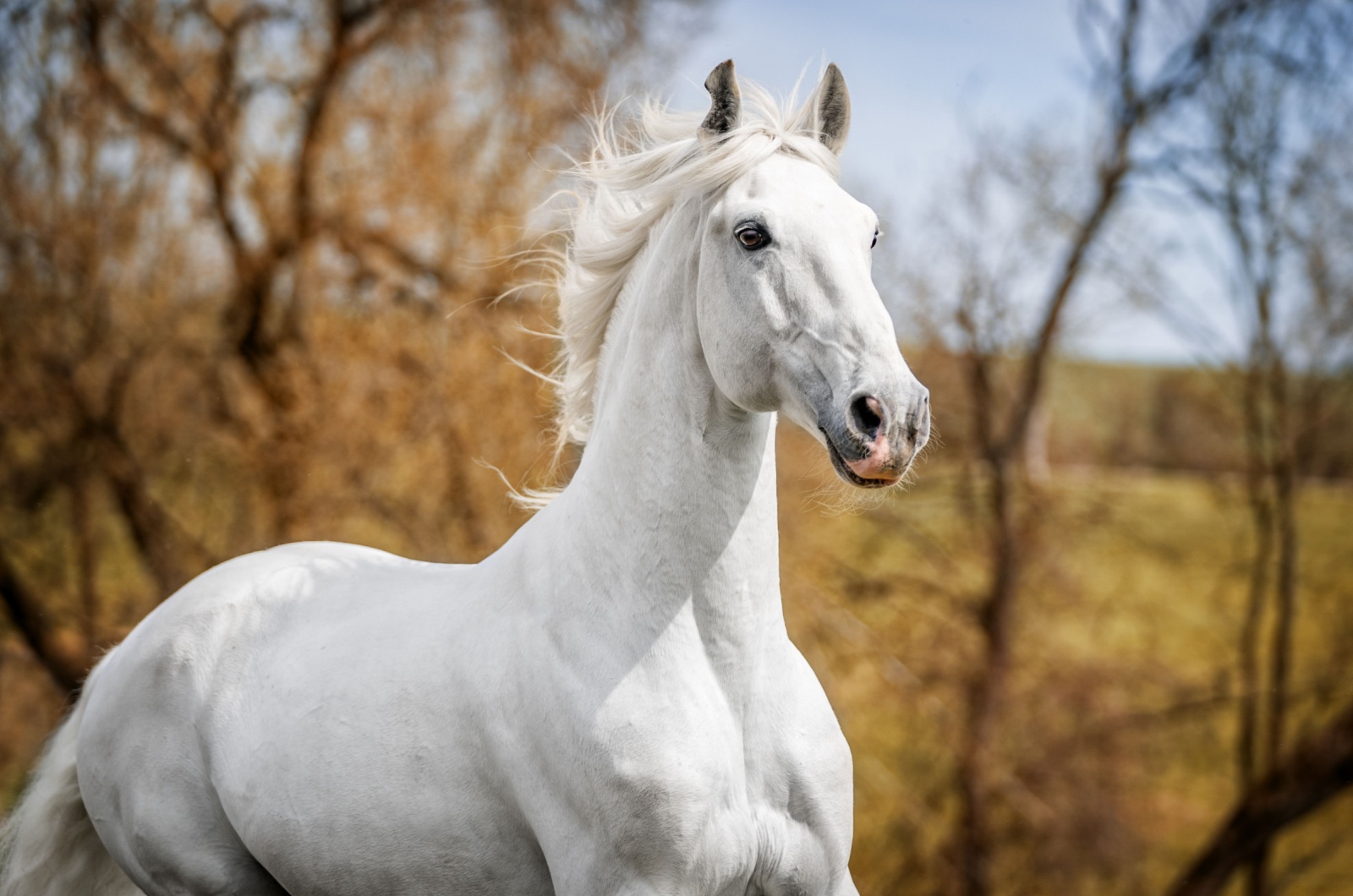
Credit: Shutterstock
Bred for bullfighting and classical dressage, Lusitanos are renowned for their agility, intensity, and powerful presence. Originating from Portugal, these horses have been selectively bred for centuries for their courage, responsiveness, and ability to perform intricate maneuvers with precision.
Their exceptional intelligence makes them highly trainable, but it can also lead to restlessness and even aggressive behavior if they feel under-stimulated or mishandled.
Lusitanos possess a naturally bold and spirited nature, often displaying dominance if not guided with firm yet compassionate leadership.
Their quick reflexes, high energy, and natural athleticism mean they can become easily bored, leading to behaviors such as nipping, rearing, or spooking if not mentally and physically challenged.
Consistent, varied training routines that engage their minds and bodies are essential to keep them focused and cooperative.
A handler working with a Lusitano must be both experienced and creative, capable of introducing new tasks and challenges that align with the horse’s natural talents, such as lateral work or liberty training.
Positive reinforcement, patience, and mutual respect are key in maintaining a harmonious partnership. With the right approach, Lusitanos can become extraordinary performance horses, showcasing elegance, power, and a deep bond with their rider.
6. Arabian
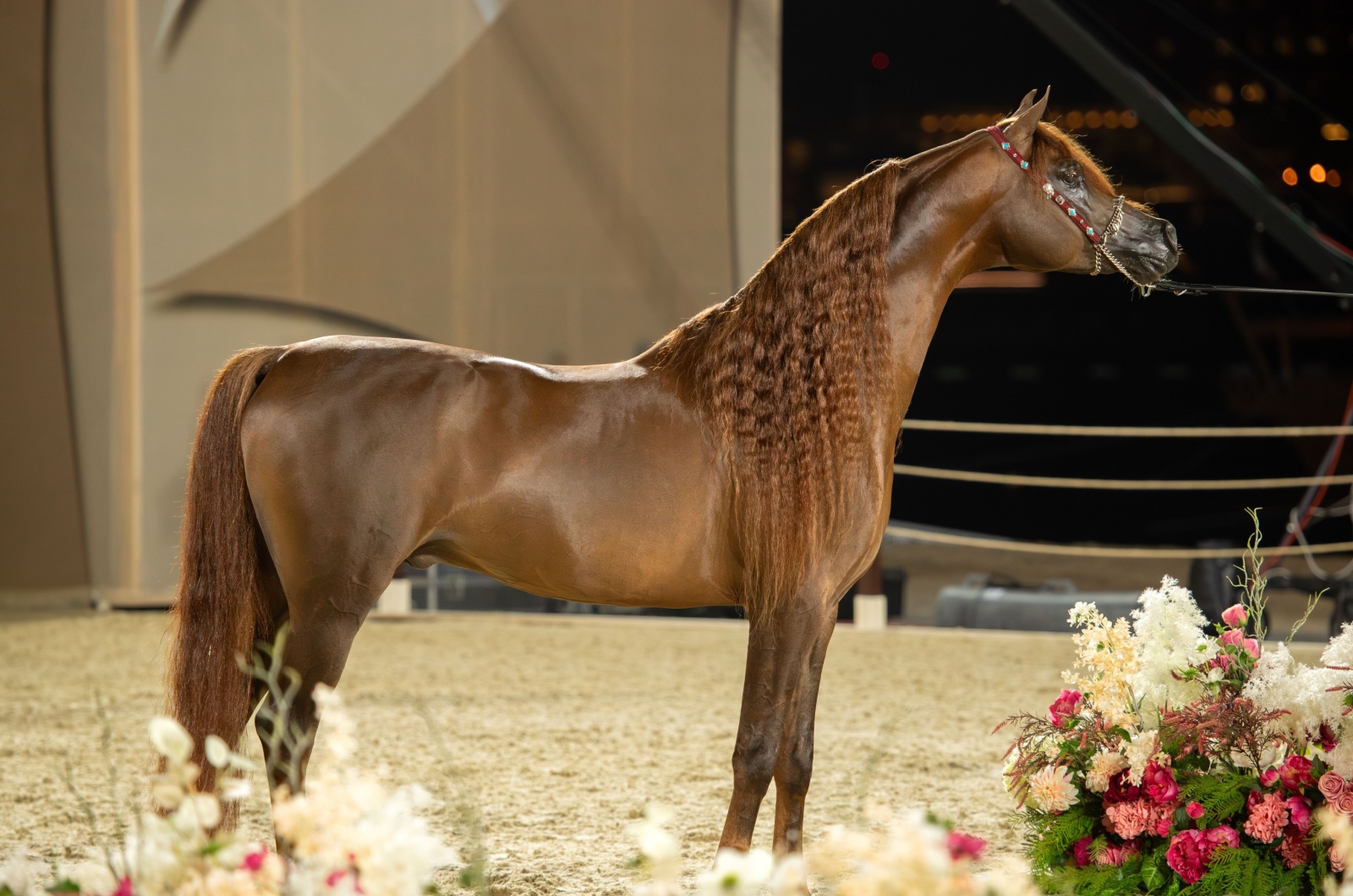
Credit: Shutterstock
Arabians are known for their beauty, endurance, and spirited personalities. These highly intelligent and sensitive horses react quickly to everything going on around them, which can make them a bit high-strung.
Their strong sense of self-preservation can make them flighty or nervous if handled by an inexperienced rider. But with the right person, they’re loyal, affectionate, and incredibly rewarding to ride.
5. Andalusian
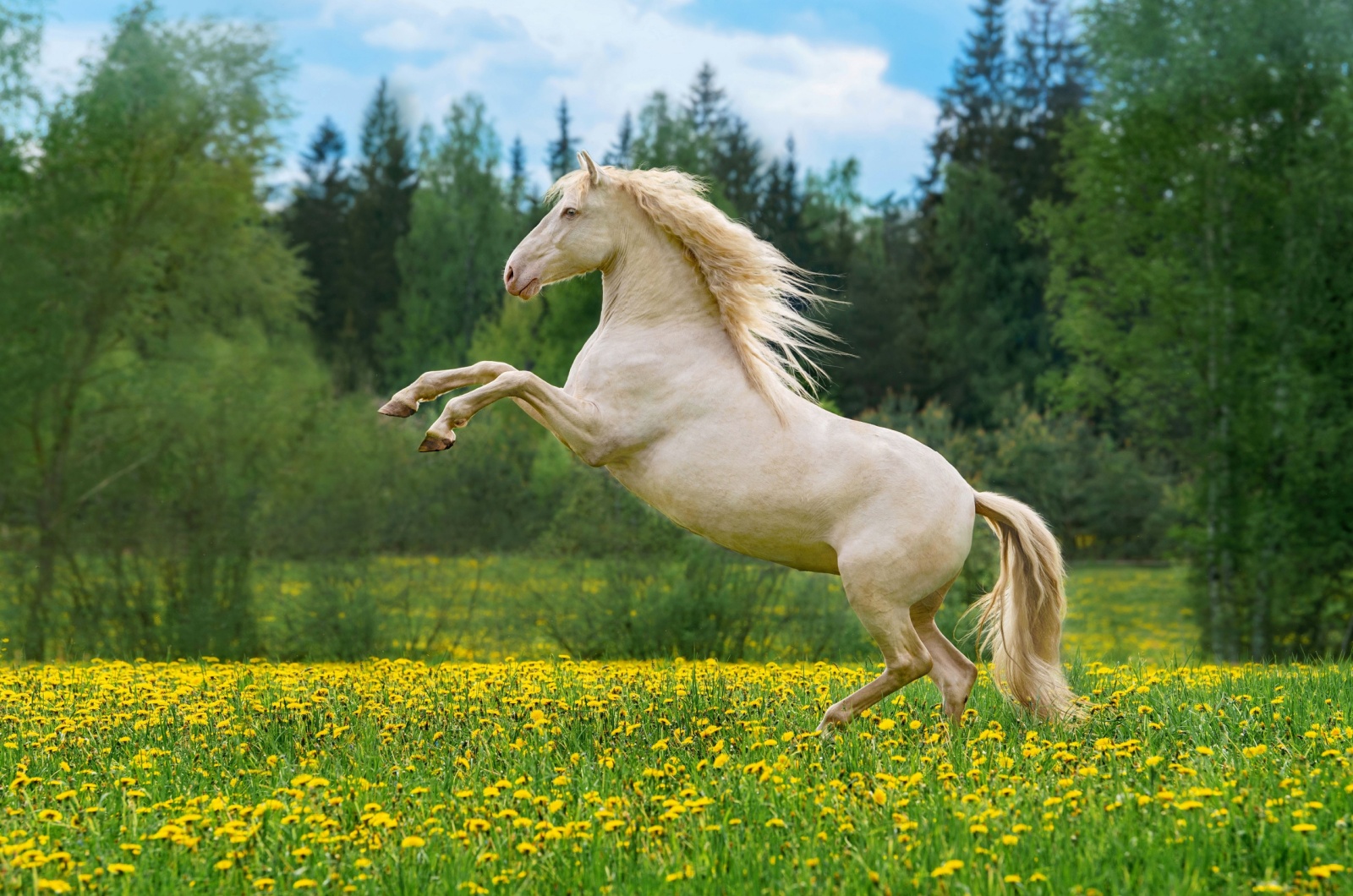
Credit: Shutterstock
Also known as the Pure Spanish Horse, Andalusians are just as daring as they are stunning. Their strength and strong personality make them a great match for experienced riders who can handle their fiery side.
Andalusians can be very sensitive and quick to react, so they don’t take well to feeling threatened or uncomfortable. However, when handled with respect, they’re known to form lifelong bonds with their riders.
4. Akhal-Teke
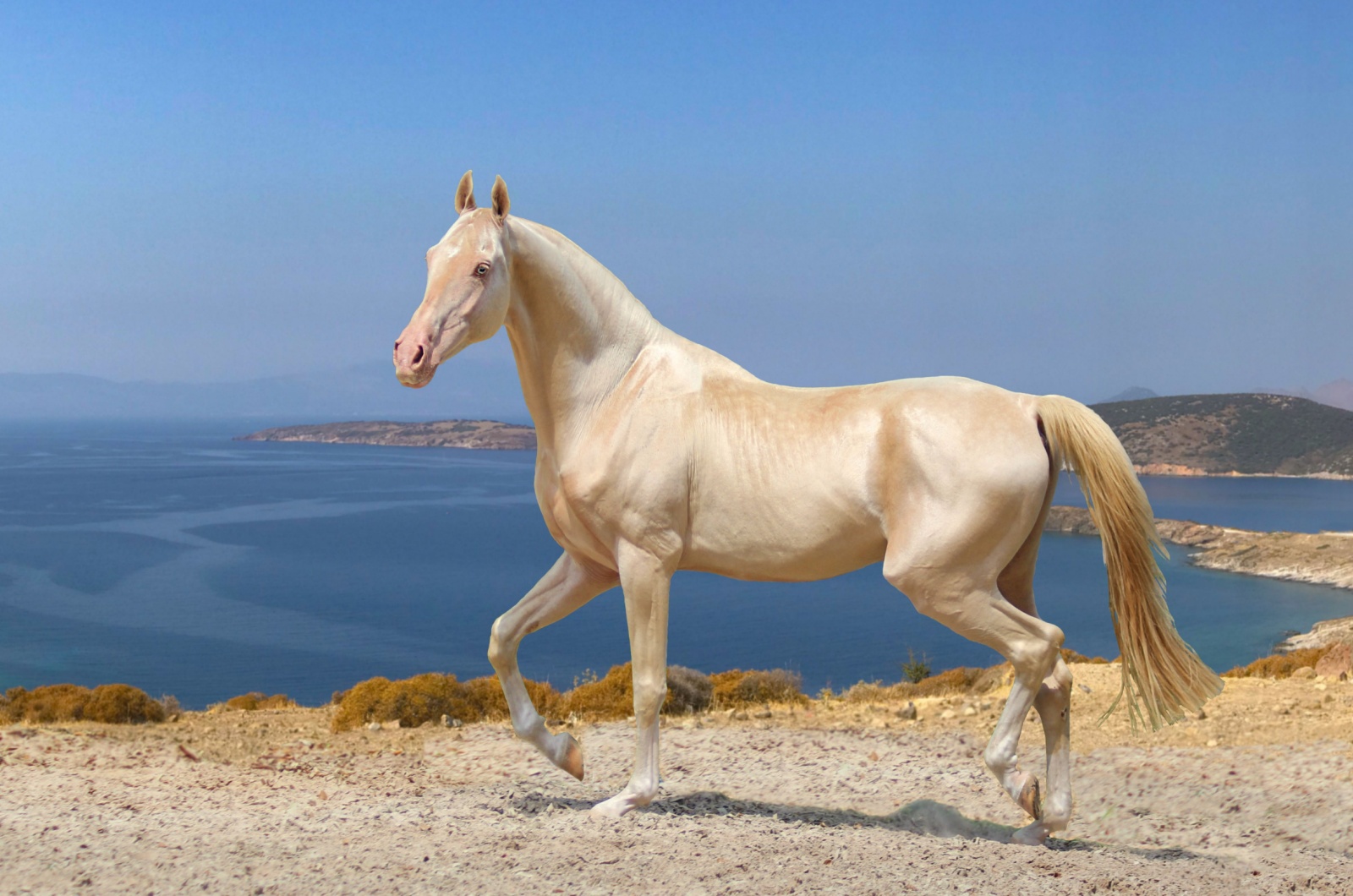
Credit: Shutterstock
Akhal-Tekes are a sight to behold with their gleaming, metallic coats. But don’t let their looks fool you – they can be unpredictable and tricky.
These spirited horses have tons of endurance and loyalty, but they don’t tolerate rough handling or inconsistency. If an Akhal-Teke feels mistreated or frustrated, they’ll dig in their heels and stand their ground, which can make them a real handful.
3. Mustang
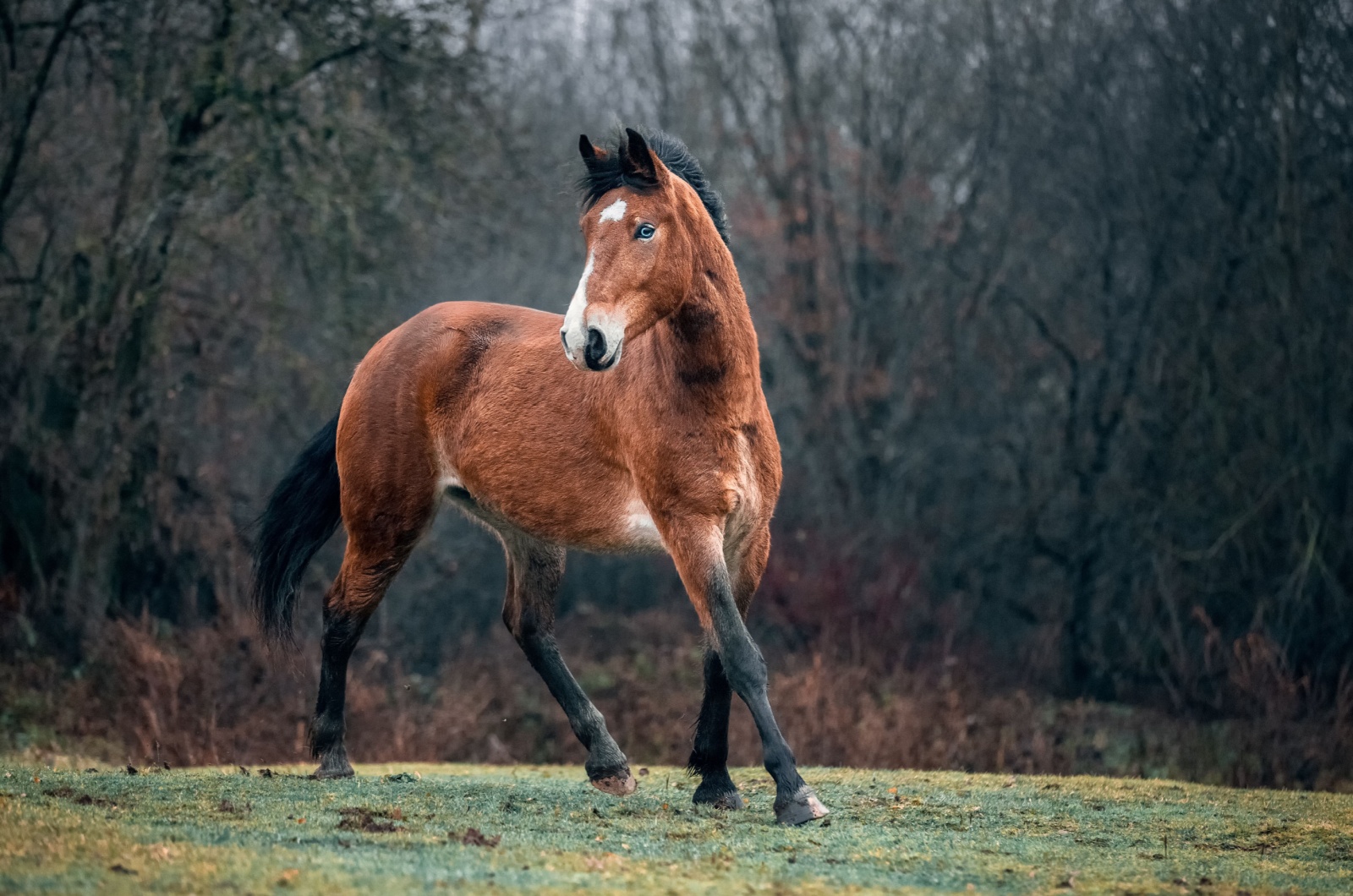
Credit: Shutterstock
Mustangs are the true wild spirits of the horse world, with instincts shaped by generations of surviving in harsh, unforgiving environments.
Descended from Spanish horses brought to North America in the 16th century, they have adapted over time to live independently, making them incredibly tough, resilient, and self-sufficient.
Their strong, independent nature makes them a challenge for most riders, as they are not accustomed to traditional human handling and can be difficult to train without patience and expertise. Mustangs possess a heightened sense of awareness, making them naturally cautious around people until trust is firmly established.
Building a bond with a Mustang requires consistent, gentle handling and a deep understanding of equine body language.
If they feel confined, threatened, or pressured too quickly, they will often revert to their survival instincts, which can include defensive behaviors such as rearing, bucking, or bolting.
These horses thrive with riders who respect their intelligence and understand their need for space and freedom while guiding them with calm, confident leadership. Proper socialization, gradual desensitization, and positive reinforcement techniques are key when working with Mustangs.
While challenging, the reward of earning a Mustang’s trust can lead to a loyal, versatile, and deeply connected partnership unlike any other.
2. Thoroughbred
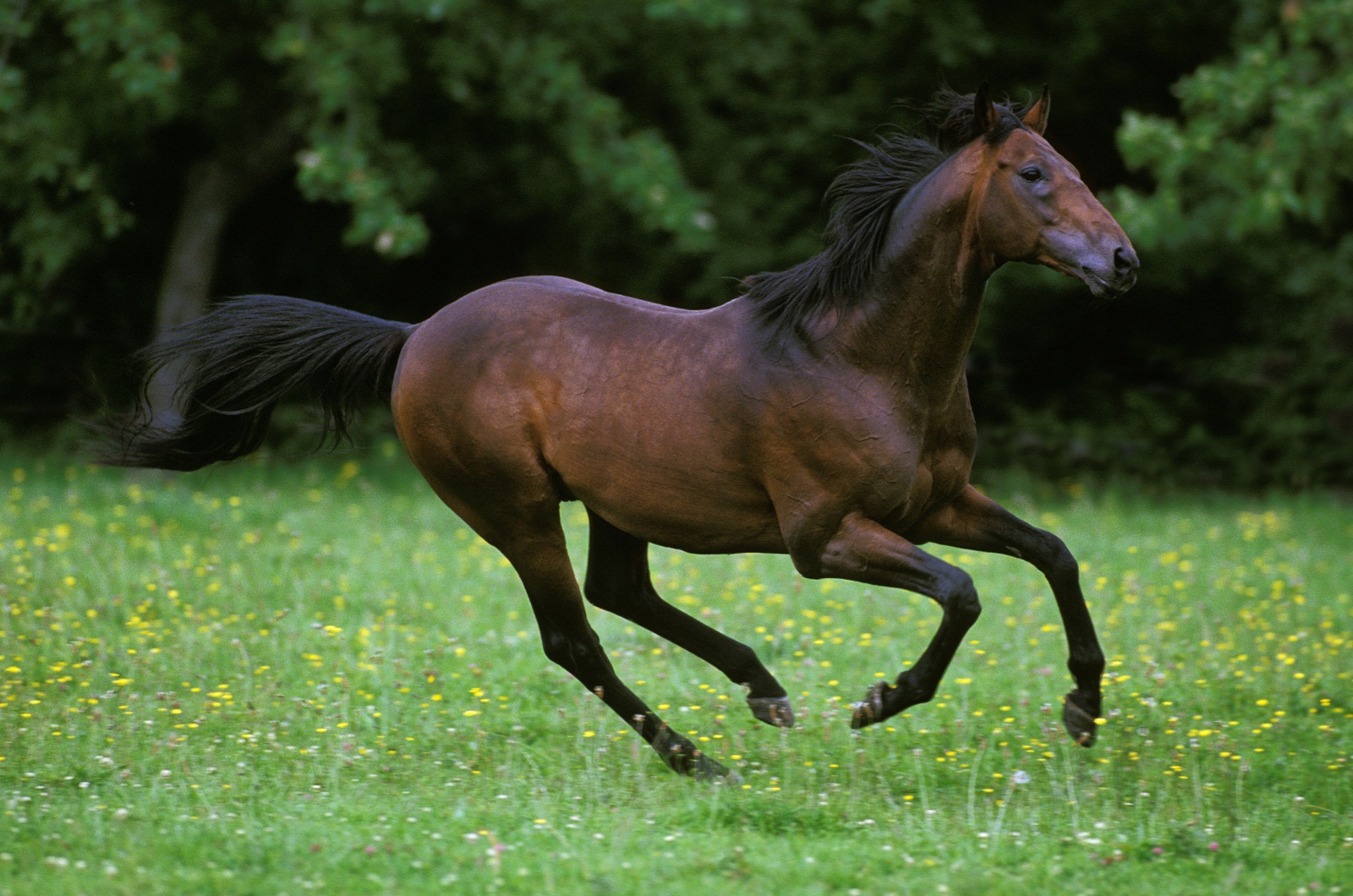
Credit: Shutterstock
Thoroughbreds are famous for their speed, but that speed comes with a high-strung, competitive nature. Bred for racing, these horses are all energy and drive, often becoming anxious or jumpy when they feel confined or stressed.
Their intense temperament needs a calm, experienced handler who can provide structure and keep their nervous energy in check, or things can get dangerous pretty fast.
1. Przewalski’s Horse
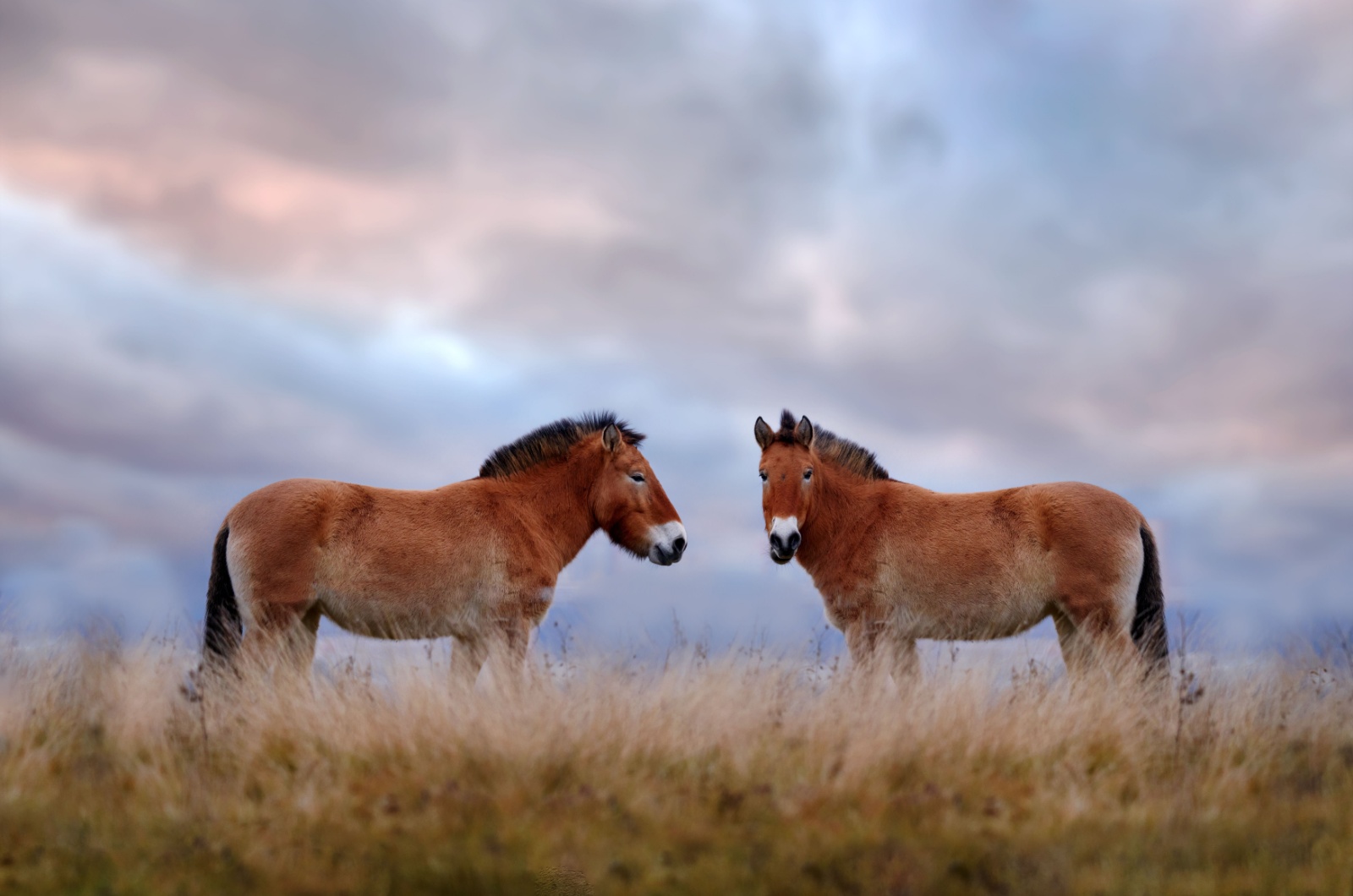
Credit: Shutterstock
Przewalski’s Horse, also known as the Takhi or Mongolian Wild Horse, is like a living piece of history. These tough, stocky horses are the closest thing we have to the wild horses of ancient times. And let me tell you, they haven’t lost their edge!
Their survival instincts and deep mistrust of humans make them the most dangerous horse breeds out there.
Przewalski’s Horses are still 100% wild. They don’t warm up to people and won’t hesitate to defend themselves if they feel even the slightest bit threatened. Charging, biting, kicking – you name it, they’ll do it, and they’ll do it fast.


